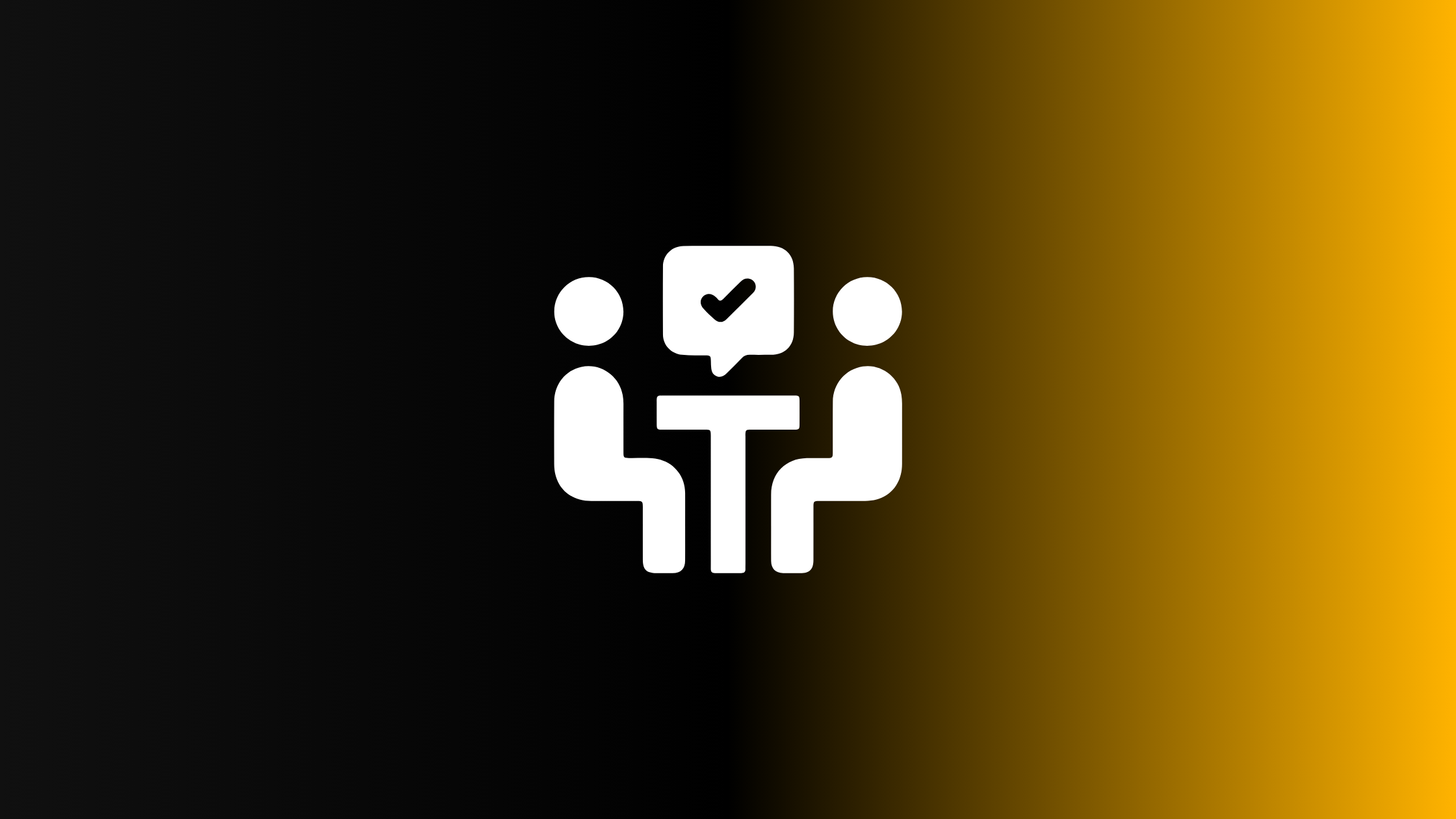Pay Equity Software: Your Tool for Equal Pay Compliance


Equal pay compliance is a fundamental aspect of ensuring workplace fairness and fostering a culture of equality. In today's world, where issues related to gender and pay disparity are under the spotlight, organizations must take proactive steps to address these concerns. Pay equity software emerges as a powerful tool in this endeavor, allowing businesses to not only adhere to legal mandates but also create a more equitable working environment.
Understanding Pay Equity
Pay equity, simply put, is the practice of ensuring that all employees receive fair compensation for their work, regardless of gender, race, or any other protected characteristic.

Achieving pay equity is crucial not only from a moral standpoint but also because it is mandated by various labor laws, such as the Equal Pay Act and Title VII in the United States.
Challenges of Achieving Pay Equity
Achieving pay equity can be challenging due to various factors, both internal and external to organizations. These challenges can make it difficult to ensure that employees receive fair compensation regardless of their gender, race, or other protected characteristics. Some of the key challenges in achieving pay equity include:
- Gender and Racial Bias: Unconscious bias in compensation decisions can lead to disparities in pay. Managers may unintentionally favor certain groups over others, resulting in unequal compensation.
- Compensation Structures: Complex compensation structures, including salary bands, bonuses, and stock options, can make it challenging to identify and rectify pay disparities. Inconsistent or unclear compensation policies can exacerbate the problem.
Also Read: A Deep Dive Into Long Term incentive Plans and LTI Compensation Structures | Guide 2023
- Lack of Transparency: Some organizations lack transparency in their compensation practices, making it difficult for employees to understand how their pay is determined. This opacity can hide pay disparities.
- Historical Pay Disparities: Past pay disparities can linger, especially if they are not actively addressed. Employees who were historically underpaid may continue to earn less than their peers even after policy changes.
- Unequal Opportunities: Disparities in career advancement and access to high-paying roles can contribute to unequal pay. If certain groups have limited opportunities for career growth, it can impact their overall compensation.
- Negotiation Bias: Negotiation bias can affect pay equity, as individuals from different demographic groups may negotiate differently for compensation. Women and minority groups, for example, may be less likely to negotiate aggressively.
- Data Challenges: Collecting and analyzing compensation data accurately and comprehensively can be a logistical challenge. Data may be dispersed across different systems, making it difficult to gain a holistic view of pay equity.
- Legal and Regulatory Compliance: Staying compliant with ever-evolving labor laws and regulations related to pay equity can be complex. Organizations must navigate varying requirements at the federal, state, and local levels.
- Pay Secrecy Policies: Some organizations discourage or prohibit employees from discussing their compensation with colleagues, which can hinder efforts to identify and address pay disparities.
- Resistance to Change: Changing compensation practices and rectifying pay disparities may face resistance from leadership or employees who are resistant to change. This resistance can slow down progress.
- Resource Constraints: Smaller organizations or those with limited resources may struggle to invest in the technology and expertise required to analyze compensation data and implement pay equity initiatives effectively.
- Lack of Awareness: Some organizations may not fully recognize the extent of pay disparities within their workforce, leading to a lack of urgency in addressing the issue.
What is Pay Equity Software?
Pay equity software like Compport are specialized tools designed to simplify the process of analysing compensation data and identifying potential disparities. It utilizes advanced algorithms and data analytics to evaluate pay equity across an organization systematically.
Benefits of Pay Equity Software
Pay equity software offers numerous benefits to organizations seeking to achieve fair and equitable compensation practices. These benefits extend beyond legal compliance and can positively impact an organization's culture, reputation, and bottom line. Here are some key benefits of using pay equity software:
- Identifying and Addressing Disparities: Pay equity software provides a systematic and data-driven approach to analyzing compensation data. It can pinpoint disparities in pay based on factors such as gender, race, or age. This visibility is crucial for addressing and rectifying pay gaps.
- Legal Compliance: Ensuring compliance with equal pay laws and regulations is a primary benefit of pay equity software. It helps organizations mitigate legal risks and avoid costly discrimination lawsuits or penalties.
- Enhanced Transparency: Pay equity software promotes transparency in compensation practices. When employees see that compensation decisions are based on objective data rather than subjective factors, it fosters trust and confidence in the organization.
- Improved Morale and Retention: Addressing pay disparities can have a direct impact on employee morale. When employees feel they are compensated fairly, they are more likely to be satisfied with their jobs and remain loyal to the organization. This can reduce turnover and associated recruitment costs.
- Enhanced Diversity and Inclusion: Pay equity software supports diversity and inclusion efforts by addressing pay disparities that may disproportionately affect underrepresented groups. It sends a message that the organization values and supports diversity.
- Data-Driven Decision-Making: By centralizing compensation data and providing analytics tools, pay equity software empowers organizations to make data-driven decisions about compensation practices, ensuring that pay is aligned with market rates and internal equity.
- Mitigating Unconscious Bias: Pay equity software can help mitigate unconscious bias in compensation decisions by highlighting areas where bias may be influencing pay. This allows organizations to take corrective actions and promote fairness.
- Enhanced Recruitment and Employer Brand: Organizations that actively promote pay equity and use pay equity software can attract top talent who are drawn to companies with fair and inclusive workplace practices. It enhances the organization's employer brand.
- Risk Mitigation: Identifying and addressing pay disparities proactively reduces the risk of negative publicity and reputational damage that can result from pay discrimination allegations.
- Scalability and Efficiency: Pay equity software is scalable, making it suitable for organizations of all sizes. It streamlines the process of analyzing compensation data, making it more efficient and less labor-intensive.
- Customization and Reporting: Many pay equity software solutions offer customizable reporting options, allowing organizations to tailor reports to their specific needs and requirements.
- Benchmarking and Best Practices: Pay equity software often includes benchmarking features that enable organizations to compare their compensation practices to industry standards and best practices, helping them stay competitive.
Key Features of Pay Equity Software
Compport is designed to help organizations analyze compensation data, identify pay disparities, and take actions to ensure fair and equitable pay practices. Here are some of the essential features you can expect in pay equity software:

- Data Collection and Integration: Pay equity software should be capable of collecting compensation data from various sources, including HR systems, payroll records, and external market data. It should also support data integration to centralize information.
- Data Analysis and Reporting: Robust data analysis tools are a core feature. The software should provide in-depth analytics to identify pay disparities based on gender, race, or other protected characteristics. It should generate detailed reports for analysis.
- Benchmarking: Benchmarking features enable organizations to compare their compensation practices against industry standards and best practices. This helps in assessing where an organization stands relative to its peers.
- Scenario Modeling: Scenario modeling capabilities allow users to simulate the impact of changes in compensation structures on pay equity. This feature helps organizations make informed decisions about compensation adjustments.
- Pay Equity Audits: Pay equity audits are automated or semi-automated processes that evaluate compensation data for compliance with equal pay laws. This feature helps organizations proactively address potential compliance issues.
Also Read: How To Conduct a Pay Equity Audit
- Accessibility and User-Friendliness: The software should be user-friendly, with an intuitive interface that allows HR professionals and analysts to navigate and use the tool effectively. Accessibility is important for broad adoption within the organization.
- Data Security: Pay equity software must prioritize data security. It should have robust security measures in place to protect sensitive compensation data from breaches or unauthorized access.
- Customization: Organizations have unique needs, and pay equity software should be customizable to accommodate different industries, company sizes, and compensation structures.
- Compliance Tracking: The software should have features for monitoring compliance with relevant labor laws and regulations related to pay equity. This ensures that the organization remains in compliance with evolving legal requirements.
- Scenario Analysis: Scenario analysis tools allow organizations to assess the impact of various compensation adjustments on pay equity. This helps in making informed decisions to rectify disparities.
- Employee Self-Service: Some pay equity software solutions offer employee self-service portals, allowing employees to view their compensation data and better understand their pay, fostering transparency.
- Integration with HR Systems: Integration capabilities with existing HR systems, payroll software, and other relevant software are important for seamless data flow and reporting.
- Audit Trails: Audit trail features track changes and activities within the software, ensuring transparency and accountability in the pay equity analysis process.
- Real-Time Data Updates: The ability to update compensation data in real-time is essential for organizations that frequently adjust salaries or bonuses.
- Comprehensive Reporting: Pay equity software should generate comprehensive reports that can be easily shared with stakeholders, such as executives, legal teams, and compliance officers.
- Collaboration Tools: Collaboration features enable teams to work together on pay equity initiatives, share insights, and collaborate on addressing disparities.
- Training and Support: Effective training resources and customer support are vital to help organizations make the most of the software and troubleshoot any issues.
How to Choose the Right Pay Equity Software
Selecting the right pay equity software is a critical decision for organizations aiming to achieve fair and equitable compensation practices. Choosing the wrong software can hinder progress and result in inefficiencies. To help you make an informed choice, here's a guide on how to choose the right pay equity software:
- Assess Your Organization's Needs: Before diving into the selection process, take a close look at your organization's specific needs and goals related to pay equity. Consider factors such as:
- The size of your organization.
- The complexity of your compensation structures.
- The diversity of your workforce.
- Your budget for pay equity initiatives.
- Your existing HR and data systems.
Understanding your unique requirements will guide your search for the most suitable pay equity software.
- Prioritize User-Friendly Interfaces: Usability is crucial. Ensure that the pay equity software you choose has an intuitive and user-friendly interface. HR professionals, analysts, and other users should be able to navigate the software easily and efficiently.
- Data Integration Capabilities: Check if the software can seamlessly integrate with your existing HR systems, payroll software, and other relevant tools. Data integration ensures that your compensation data is up to date and accurate, which is essential for meaningful analysis.
- Customization Options: Look for software that can be customized to align with your organization's compensation structures, industry-specific needs, and compliance requirements. The ability to tailor the software to your unique circumstances is invaluable.
- Data Security and Compliance: Pay close attention to data security features. Ensure that the software meets rigorous security standards to protect sensitive compensation data. Additionally, verify that the software assists in monitoring compliance with labor laws and regulations.
- Analytics and Reporting Tools: Robust data analysis and reporting tools are paramount. The software should provide in-depth analytics capabilities to identify pay disparities and generate comprehensive reports. These tools empower your organization to make informed decisions.
- Benchmarking Features: Select software that offers benchmarking capabilities to compare your compensation practices with industry standards and best practices.
- Benchmarking Scenario Analysis: Scenario modeling features enable you to simulate the impact of various compensation adjustments on pay equity. This capability is essential for making data-driven decisions to rectify disparities.
- Accessibility: Accessibility is key to widespread adoption within your organization. Ensure that the software is accessible to all relevant stakeholders, including HR professionals, executives, and employees.
- Audit Trails: Choose software that includes audit trail features, which track changes and activities within the software. This transparency ensures accountability in the pay equity analysis process.
- Support: A responsive and reliable vendor can make a significant difference in your experience with the software.
- Scalability: Consider whether the software can grow with your organization. Scalability ensures that the software remains effective as your workforce and compensation structures evolve.
- Pricing and Cost Transparency: Understand the pricing structure of the software, including any subscription fees, implementation costs, or additional charges. Ensure that the vendor is transparent about pricing to avoid unexpected expenses.
- Demos: Before making a final decision, request demonstrations of the software. Hands-on experience will help you evaluate its functionality and suitability for your organization.
- Legal and Regulatory Updates: Confirm that the software can adapt to changes in labor laws and regulations. Pay equity laws may evolve, and your software should remain compliant.
- Employee Self-Service: If relevant, consider whether the software offers employee self-service features that allow employees to access their compensation data, promoting transparency.
Conclusion
Pay equity is a critical component of building a fair and inclusive workplace. Pay equity software offers organizations a robust tool to meet legal requirements, analyze compensation data, and foster a culture of equality. By considering the benefits, features, and implementation strategies discussed here, organizations can take a proactive step toward achieving equal pay compliance and creating a more equitable work environment.
Frequently Asked Questions(FAQs)
1. What is pay equity, and why is it important for organizations?
Pay equity is the practice of ensuring that all employees are paid fairly for their work, regardless of gender, race, or other protected characteristics. It is essential for organizations because it not only aligns with legal mandates but also promotes fairness, diversity, and inclusion in the workplace. Pay equity helps build trust among employees and reduces the risk of discrimination lawsuits
2. What are the main challenges organizations face in achieving pay equity?
Achieving pay equity can be challenging due to factors like unconscious bias, complex compensation structures, lack of transparency, historical pay disparities, unequal opportunities, negotiation bias, data challenges, legal compliance, pay secrecy policies, resistance to change, resource constraints, and lack of awareness. These challenges can make it difficult to identify and rectify pay disparities.
3. How does pay equity software help organizations address pay disparities?
Pay equity software, such as Compport, utilizes advanced algorithms and data analytics to systematically analyze compensation data and identify potential pay disparities based on gender, race, or other factors. It provides actionable insights, enabling organizations to proactively address and rectify pay gaps.
4. What are the key benefits of using pay equity software for organizations?
Pay equity software offers several benefits, including identifying and addressing disparities, ensuring legal compliance, enhancing transparency, improving morale and retention, fostering diversity and inclusion, enabling data-driven decision-making, mitigating unconscious bias, enhancing employer brand, and providing scalability and efficiency in compensation analysis.
5. How can organizations choose the right pay equity software for their needs?
To select the right pay equity software, organizations should assess their specific needs, prioritize user-friendly interfaces, consider data integration capabilities, evaluate customization options, ensure data security and compliance features, look for robust analytics and reporting tools, check for benchmarking and scenario analysis features, prioritize accessibility, consider audit trail features, assess vendor support, confirm scalability, understand pricing and cost transparency, request software demos, and ensure the software can adapt to legal and regulatory updates.
Find out how Compport can help you manage all your Compensation Management and Rewards Tech needs, book a demo today!
%2520(6)%2520(2).png)
Recommended articles

8 Best Practices to Unravel the Complexity of Management Compensation Structures

When AI Meets Compensation: Unveiling the Limitations of Generative AI in Compensation Management


